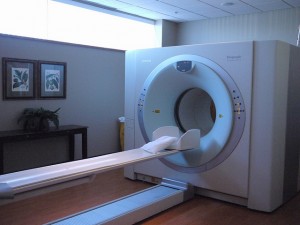We spend a great deal of time warning about the dangers of radon exposure and how it increases the risk of cancer, or more specifically lung cancer. While lung cancer does have an extremely high mortality rate, there are other forms of the disease out there as well as other dangers that can increase the risk of contracting it.
Radon Not the Only Radiation Risk
Believe it or not, Computerised Tomography (CT) scans are known to increase the risk of cancer for those exposed to radiation during the procedure. The worst part about it is that CT scans are one of the most common forms of radioactive exposure for people the world over. A committee on the medical aspects of radiation in the environment, is pushing hospitals to be more transparent about the dangers associated with CT scans. The committee believes that hospitals should disclose information to the public about frequent dose survey and the related results.
Professor Alex Elliot, the committee’s chairman believes knowing the amount of exposure during a scan is integral to understanding the health risk.
“If we don’t know how much radiation we are exposed to we can’t work out what that risk of that radiation is.”
The Radiation Risk from CT Scans is Real
According to Elliot, since the 1990s the total number of CT scans being performed in England have increased from about 1 million to 5 million. In other words, scans are used much more openly today than in the past and that number is likely increasing more and more.
Elliot says that the plan is not to scare people away from getting scans when necessary, but instead to help doctors understand when the benefits that can come from a scan overshadow the risk.
“When Public Health England did the last survey they wrote [to hospitals] and asked for volunteers and the good guys returned the data but others didn’t so we have an incomplete survey. The best we had . . . was a one-third return rate. So we are suggesting that the departments of health include within regulations that not just the NHS but all health providers should return those data.”
CT scans are used just as much in other countries too, such as the United States, and Canada. Of the total radiation dosage most people are receiving, artificial sources account for a great deal of it. Of course, other dangers include exposure to nuclear power plants, elecromagnetic fields and radon gas.
A study in 2012 estimates that young patients exposed to radiation from just five to ten CT scans, which are directed at their head, will have more than a tripled risk of developing brain cancer or leukemia. To put it bluntly, the dangers and risk are still evident if you take the time to notice.
It makes a lot of sense then why Professor Elliot, and other committee members are interested in fully understanding the risks.
Via: Financial Times UK



